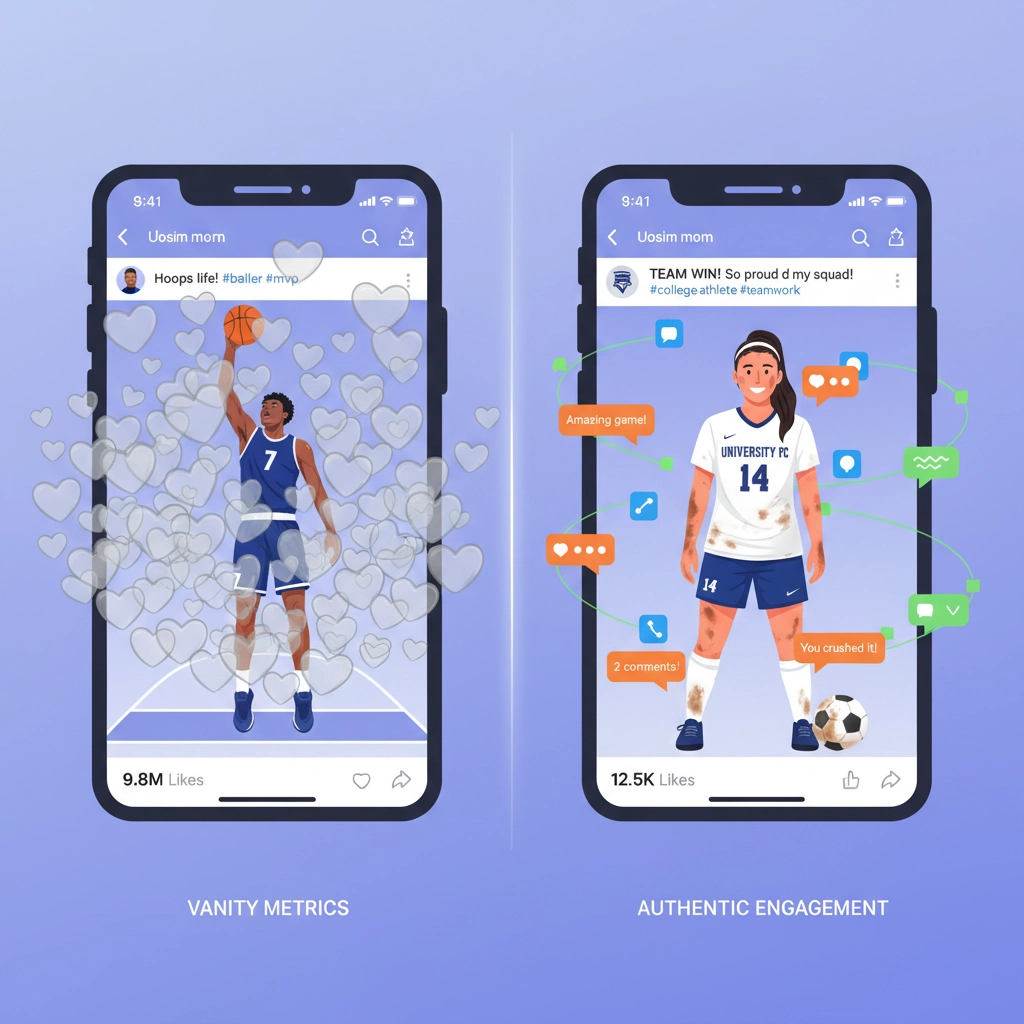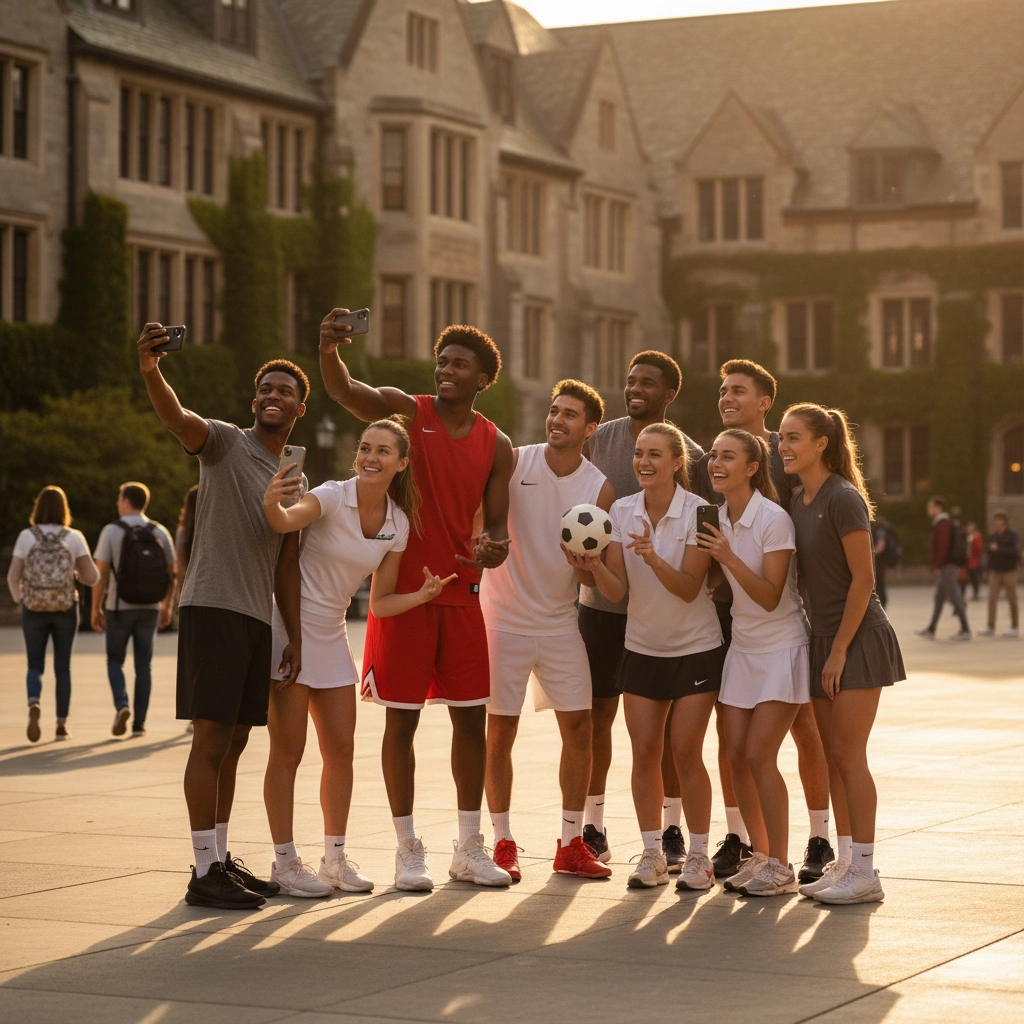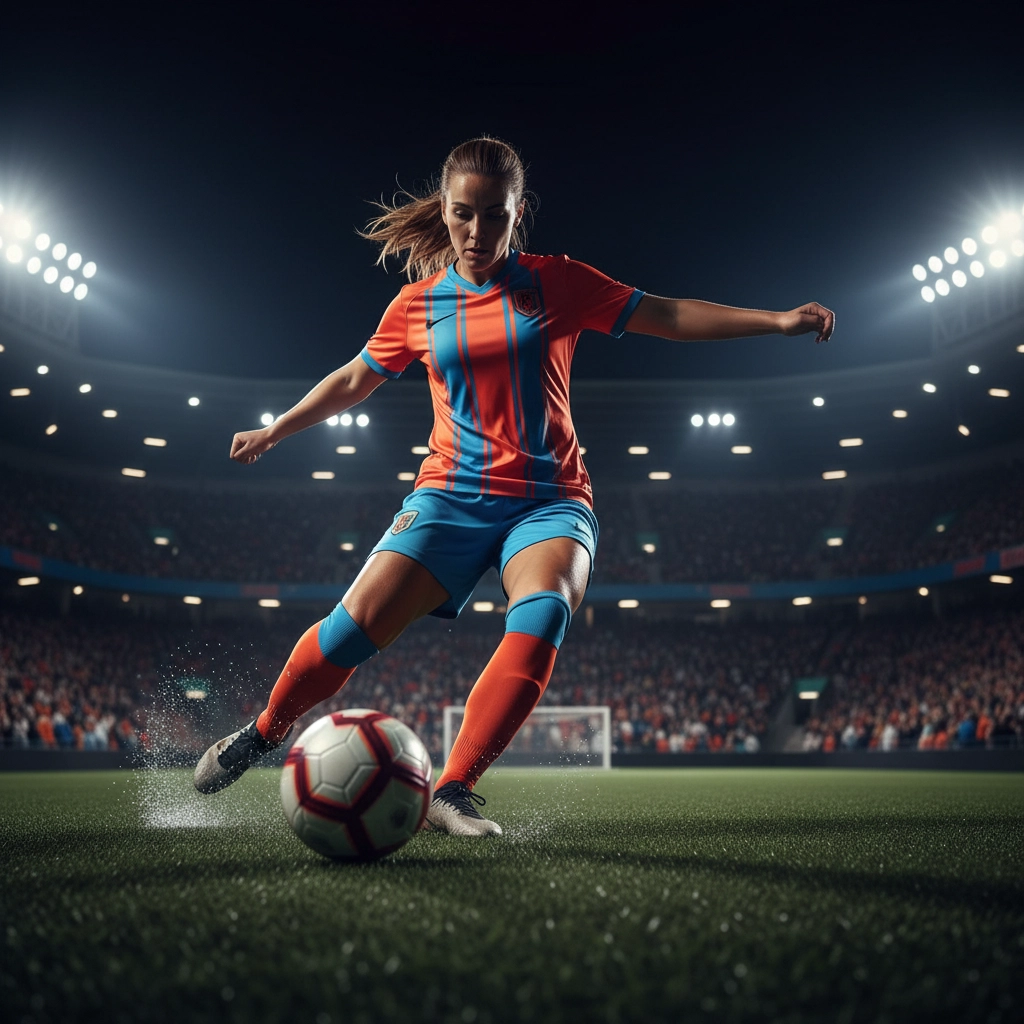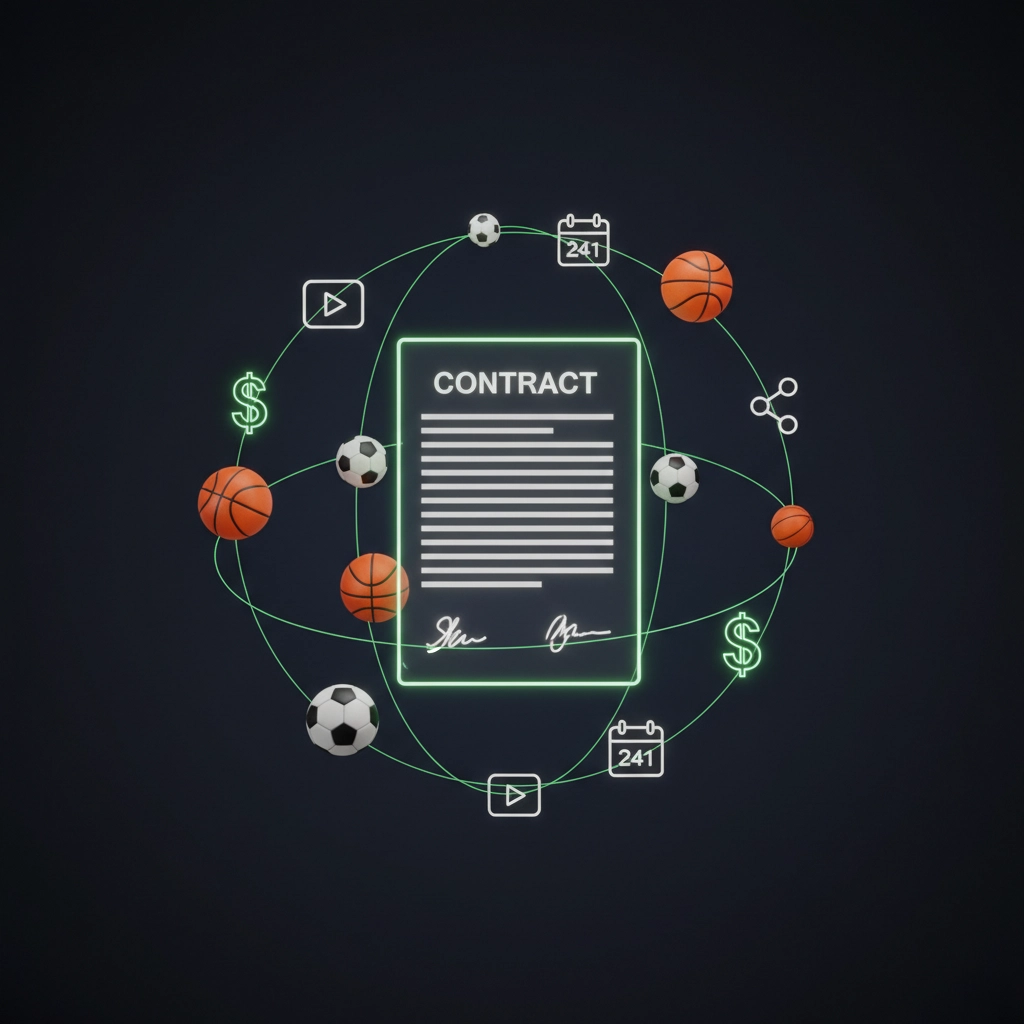Sports brands are throwing millions at athlete partnerships, but most are getting it wrong. The landscape has shifted with NIL deals, social media evolution, and changing fan expectations. Yet brands keep making the same costly mistakes that kill authentic connections and waste marketing budgets.
Here are the seven biggest mistakes sports brands make with athlete partnerships and practical solutions to fix them.
Mistake #1: Chasing Follower Counts Over Authentic Engagement
Brands get mesmerized by big follower numbers and forget to check if those followers actually care about what the athlete posts. A basketball player with 2 million followers might get fewer meaningful interactions than a college soccer player with 50,000 engaged fans.
The Problem: Follower count doesn't equal influence. Many high-profile athletes have massive but disengaged audiences. Their posts get thousands of likes but generate little genuine conversation or action.
The Fix: Look beyond vanity metrics. Analyze engagement rates, comment quality, and audience demographics. A smaller, highly engaged community often delivers better ROI than millions of passive followers.

Focus on athletes whose audiences match your target market. Use tools to analyze audience overlap and engagement patterns before signing partnership deals.
Mistake #2: Creating Generic, One-Size-Fits-All Content
Sports brands often hand athletes the same generic talking points and expect authentic results. This cookie-cutter approach makes every partnership look identical and fails to leverage what makes each athlete unique.
The Problem: Generic content feels forced and obvious to fans. When five different athletes post nearly identical captions about your product, audiences notice the inauthenticity immediately.
The Fix: Develop personalized content strategies for each athlete. Work with their unique voice, interests, and fan base. Let them integrate your brand naturally into their existing content style.
Instead of scripted posts, give athletes creative freedom within brand guidelines. The best partnerships feel like natural recommendations from someone fans already trust.
Mistake #3: Ignoring the Power of College Athletes and NIL
Many brands still focus exclusively on professional athletes while missing massive opportunities in college sports. NIL rules opened doors to partnerships with college athletes who often have stronger local connections and more affordable partnership rates.
The Problem: Professional athlete partnerships are expensive and oversaturated. College athletes, especially in smaller markets, often have more engaged local fan bases and cost significantly less to partner with.
The Fix: Diversify your athlete portfolio with college partnerships. Local college athletes can be perfect for regional campaigns or community-focused initiatives.

College athletes often bring fresh energy and authentic excitement about brand partnerships that seasoned professionals might lack. They're also more likely to create genuine, unscripted content.
Mistake #4: Failing to Plan for Long-Term Relationship Building
Brands treat athlete partnerships like one-off transactions instead of relationship investments. They sign short-term deals, extract immediate value, then move on without building deeper connections.
The Problem: Transaction-focused partnerships lack authenticity and fail to build lasting brand association. Athletes become interchangeable spokespeople rather than genuine brand advocates.
The Fix: Invest in longer-term partnerships with fewer athletes rather than many short-term deals. Give athletes time to genuinely experience and connect with your brand.
Create partnership structures that evolve over time. Start with product trials, move to content creation, then potentially explore equity arrangements or exclusive deals as relationships strengthen.
Mistake #5: Overlooking Female Athletes and Women's Sports
Despite growing viewership and engagement in women's sports, many brands still allocate minimal budgets to female athlete partnerships. This oversight misses opportunities with highly engaged audiences and often more affordable partnership rates.
The Problem: Female athletes typically receive significantly smaller partnership offers despite often having more engaged audiences and creating more authentic content.
The Fix: Balance your athlete partnership portfolio with female athletes across different sports. Women's sports fans often show higher purchase intent and brand loyalty.

Female athletes frequently bring different perspectives and reach demographics that male athletes might miss. They're also often more accessible and willing to create diverse content types.
Mistake #6: Neglecting Social Media Platform Diversity
Brands often focus partnerships around one or two major platforms while missing opportunities on emerging or niche platforms where their target audiences might be more active.
The Problem: Platform preferences vary by age, sport, and region. Focusing only on Instagram and Twitter might miss TikTok audiences or sport-specific communities on platforms like Discord or specialized forums.
The Fix: Map your target audience's platform preferences and work with athletes who are active across multiple relevant platforms. Consider emerging platforms where competition for attention is lower.
Platforms like Fanz.us offer unique opportunities for sports-focused community building that mainstream social media can't match. Athletes using these specialized platforms often have more engaged sports-focused audiences.
Mistake #7: Poor Contract Structure and Unclear Expectations
Many partnership agreements lack clear deliverable definitions, usage rights specifications, and performance expectations. This creates conflicts and disappoints both parties.
The Problem: Vague contracts lead to disputes about content quantity, quality, exclusivity terms, and usage rights. Athletes might not understand brand expectations while brands feel they're not getting value.
The Fix: Create detailed agreements that specify exact deliverables, content requirements, approval processes, and usage rights. Include performance benchmarks and clear timelines.

Build in flexibility for content creation while maintaining clear minimum requirements. Define what constitutes successful partnership completion and how both parties can exceed expectations.
How Modern Platforms Change the Game
Traditional athlete partnerships relied heavily on mainstream social media platforms with limited sports-specific features. Modern sports-focused platforms offer new opportunities for authentic athlete-brand connections.
Specialized platforms allow for deeper sports community engagement and more targeted audience reach. Athletes can connect with fans who specifically follow them for sports content rather than general social media entertainment.
These platforms also provide better analytics for sports-related engagement and allow brands to measure partnership success more accurately within sports contexts.
Building Better Partnerships Moving Forward
Successful athlete partnerships require strategic thinking beyond traditional celebrity endorsements. Brands need to view athletes as content creators, community builders, and authentic voices rather than just famous faces.
The best partnerships create value for athletes, brands, and fans simultaneously. Athletes get meaningful brand relationships, brands reach engaged audiences, and fans discover products through trusted voices.

Focus on building partnerships that could naturally exist even without formal agreements. When athletes genuinely use and enjoy your products, their recommendations carry more weight with audiences.
Modern athlete partnerships work best when they feel like natural extensions of existing relationships rather than obvious business transactions. The most successful brands treat athletes as partners in building something valuable rather than just paid promotional channels.
The sports marketing landscape continues evolving rapidly. Brands that adapt their partnership strategies to prioritize authenticity, diversify their athlete portfolios, and leverage specialized platforms will build stronger connections with sports fans and drive better business results.
